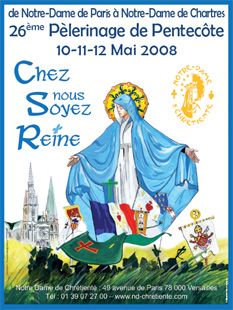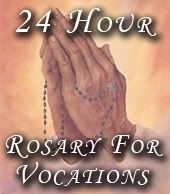Formerly known as the Society of St. John Cantius, the community of the Canons Regular of St. John Cantius was founded in 1998 by Fr. C. Frank Phillips, C.R. as a Roman Catholic religious community of men dedicated to a restoration of the sacred in the context of parish ministry. Its mission is to help Catholics rediscover a profound sense of the sacred through solemn liturgies, devotions, sacred art, sacred music, as well as instruction in Church heritage, catechetics, and Catholic culture. This mission is reflected in the community's motto: Instaurare Sacra (Restoration of the Sacred).
The purpose of the Canons Regular of St. John Cantius is the formation of a Roman Catholic men's diocesan institute, which shall form and train men to be priests and brothers. On December 23, 1999, the memorial of St. John of Kenty (Cantius), Francis Cardinal George, O.M.I., Archbishop of Chicago, issued a "Decree approving the statutes and erecting the Society of St. John Cantius as a public diocesan association of the Christian faithful with juridic personality." On January 31, 2003, he gave his approval to the recently completed Spiritual Directory and Book of Customs as the local provisionary rule for the Society of St. John Cantius—the next step toward approval of constitutions for the Society as a diocesan institute. Now known as the Canons Regular of St. John Cantius the community's priests have full faculties to celebrate the Holy Sacrifice of the Mass and sacraments according to the normative liturgical books of the Roman Rite (in Latin and in the vernacular), as well as all of the 1962 liturgical books
Members of the Canons Regular of St. John Cantius live in common according to the Rule of St. Augustine and their local Rule of Life. Members dedicate themselves to the recovery of the sacred in living the common life, striving for personal sanctity and by seeking the salvation and sanctification of all. In order to achieve these ends, special emphasis will be placed upon the study and implementation of the sacred rites of the Latin Church in their various approved manifestations.
The laity can also affiliate themselves with the Canons Regular of St. John Cantius as Associate Members. These may be men who are considering a religious vocation to the Society or individuals, male or female, married or single, who wish to help the advancement of the Canons Regular of St. John Cantius in their capacity as a member of the laity.
The community's nineteen members include six priests, one deacon, three seminarians, three professed religious brothers and six members in formation. The Canons Regular administer the successful St John Cantius Parish in the Archdiocese of Chicago. St. John’s offers the Holy Sacrifice of the Mass according to the Roman Rite in both the Ordinary and Extraordinary Forms.
For more information about the Canons Regular of St. John Cantius, contact:
The purpose of the Canons Regular of St. John Cantius is the formation of a Roman Catholic men's diocesan institute, which shall form and train men to be priests and brothers. On December 23, 1999, the memorial of St. John of Kenty (Cantius), Francis Cardinal George, O.M.I., Archbishop of Chicago, issued a "Decree approving the statutes and erecting the Society of St. John Cantius as a public diocesan association of the Christian faithful with juridic personality." On January 31, 2003, he gave his approval to the recently completed Spiritual Directory and Book of Customs as the local provisionary rule for the Society of St. John Cantius—the next step toward approval of constitutions for the Society as a diocesan institute. Now known as the Canons Regular of St. John Cantius the community's priests have full faculties to celebrate the Holy Sacrifice of the Mass and sacraments according to the normative liturgical books of the Roman Rite (in Latin and in the vernacular), as well as all of the 1962 liturgical books
Members of the Canons Regular of St. John Cantius live in common according to the Rule of St. Augustine and their local Rule of Life. Members dedicate themselves to the recovery of the sacred in living the common life, striving for personal sanctity and by seeking the salvation and sanctification of all. In order to achieve these ends, special emphasis will be placed upon the study and implementation of the sacred rites of the Latin Church in their various approved manifestations.
The laity can also affiliate themselves with the Canons Regular of St. John Cantius as Associate Members. These may be men who are considering a religious vocation to the Society or individuals, male or female, married or single, who wish to help the advancement of the Canons Regular of St. John Cantius in their capacity as a member of the laity.
The community's nineteen members include six priests, one deacon, three seminarians, three professed religious brothers and six members in formation. The Canons Regular administer the successful St John Cantius Parish in the Archdiocese of Chicago. St. John’s offers the Holy Sacrifice of the Mass according to the Roman Rite in both the Ordinary and Extraordinary Forms.
For more information about the Canons Regular of St. John Cantius, contact:
- Canons Regular of St. John Cantius, 825 North Carpenter Street, Chicago, Illinois 60622
- email Fr Frank Phillips CR at pastor at cantius.org or
- visit the Canons Regular website at www.canons-regular.org.






 The Priestly Fraternity of St. Peter is a Clerical Society of Apostolic Life of Pontifical right, that is, a community of Roman Catholic priests who do not take religious vows, but who work together for a common mission in the world. The mission of the Fraternity is two-fold: first, the formation and sanctification of priests in the cadre of the
The Priestly Fraternity of St. Peter is a Clerical Society of Apostolic Life of Pontifical right, that is, a community of Roman Catholic priests who do not take religious vows, but who work together for a common mission in the world. The mission of the Fraternity is two-fold: first, the formation and sanctification of priests in the cadre of the 







 The description of the book is roughly as follows:
The description of the book is roughly as follows:
